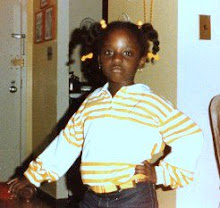Taming the Beast

While viewing clips of exploited women in magazine advertisements in a class at Temple University, I couldn’t help but notice the consistency in the animalistic images of black women. First it was Janet Jackson curved over with black tiger stripes painted on her bare skin. Then, it was Tyra Banks posing as a lion in a milk advertisement. And the ads continued in that fashion. In Psychology of Women Quarterly, an article entitled “Racial and Gender Biases in Magazine Advertising” explores these biases in depth. The results of the study noted that not only are Black women underrepresented in White magazines, but Black women wore the majority of animal prints, most of which were patterned after a predatory animal. This reinforces the stereotype that black women are sexually aggressive. Moreover, the image of “the Black Bitch” appears to also saturate the media. In her book, “Black Sexual Politics: African Americans Gender and the New Racism”, Patricia Hill Collins writes;
“Reminiscent of the association of Africans with animals, the term bitch also
refers to female dogs. Via this association, the term thus invokes a web of meaning that links unregulated sexuality with uncontrolled fertility. Female dogs or bitches “fuck” and produce litters of puppies.”
The “bitch” image ratifies the animal image. The “bitch” is a dog. The “bitch” is an animal. A bitch needs to be tamed. A bitch breeds unconsciously. How, now, will it be possible for one to read the following excerpt about actual bitches (dogs) and disassociate from the image of the Black woman (and women in general)?
“Before mating a bitch the owner must be prepared to commit a considerable amount of time, and sometimes money, to the rearing of the puppies. Breeding the bitch makes an owner responsible for caring for the bitch and the puppies and finding caring and responsible homes for them. Before a bitch is bred she should be examined by a vet to ensure she is in good health and, if possible, checked to ensure she does not have any problems which her puppies may inherit.”
The image of Black women as merely associated with animals however, has seemed to have evolved into the notorious image of the Jezebel. This is an image that has lingered for generations. Kelly Brown Douglass notes that,
“One of the most prominent stereotypes has characterized the Black female as ‘a person governed almost entirely by her libido.’ She has been described as having an insatiable sexual appetite, being extraordinarily passionate, and being sexually aggressive and cunning. Such stereotyping has produced the paramount image for Black womanhood in white culture- the Jezebel image. ‘Jezebel’ has come to symbolize an evil, scheming, and seductive woman.”
Jezebel is alluring, seductive and deviant. She is lascivious by nature. The Jezebel’s appetite for sex overcomes her and hurls her into an unrestrained eroticism. What’s even more fascinating are the underlying theological implications that these demeaning images suggest. What does this mean for me in regards to my relationshp with God? How and does this affect it?
Jezebel was first a biblical mention before mentioned elsewhere. Focus your attention however, to the three images in the book of Revelation that are centrally antagonistic to Christ, his people and his kingdom. These are the images of the Jezebel, the Beast and the Harlot. While the beasts mentioned in both Revelation 13 and 17 as well as the Jezebel and the Harlot all signify supernatural individual(s) and powers that have both spiritual and political influence, it is their images that can dangerously place linkage to the Black woman (as well as other women) and thus connect her unconsciously to all things spiritually perverse. The woman Jezebel was originally the name of the Phoenician Queen of Israel who rejects Yahweh as God, influences her husband King Ahab to commit acts contrary to Yahweh’s will, which in turn influences Yahweh’s servants to worship these foreign deities. Jezebel is the wickedest of women thus symbolizing a view of womanhood that is opposite to the Godly women represented in the Bible. The image of the beast holds equally negative connotations; He is the archetype of evil. With it’s ten heads and seven horns, Revelation 13:6 states that “he opened his mouth in blasphemies against God, to blaspheme His name and His tabernacle, that is, those who dwell in heaven.” There is furthermore a second negative feminine figure, the great whore of Babylon in Revelation 17-18 who rides the beast.
The Jezebel, The Beast, The Harlot
To dub the Black woman with any of these three terms, and/or all else associated with it, is to tag her with a lasting stigma. It is a sad, sad day when we fool ourselves into believing that we have somehow reclaimed and redefined “Bitch”, “Beast”, “Animal” and “Whore” and have magically transformed oil into water. If the notion that we, as human beings were made in the image and likeness of God, it should be intolerable for any contradictory notions of being and existence to maintain.


0 Comments:
Post a Comment
<< Home